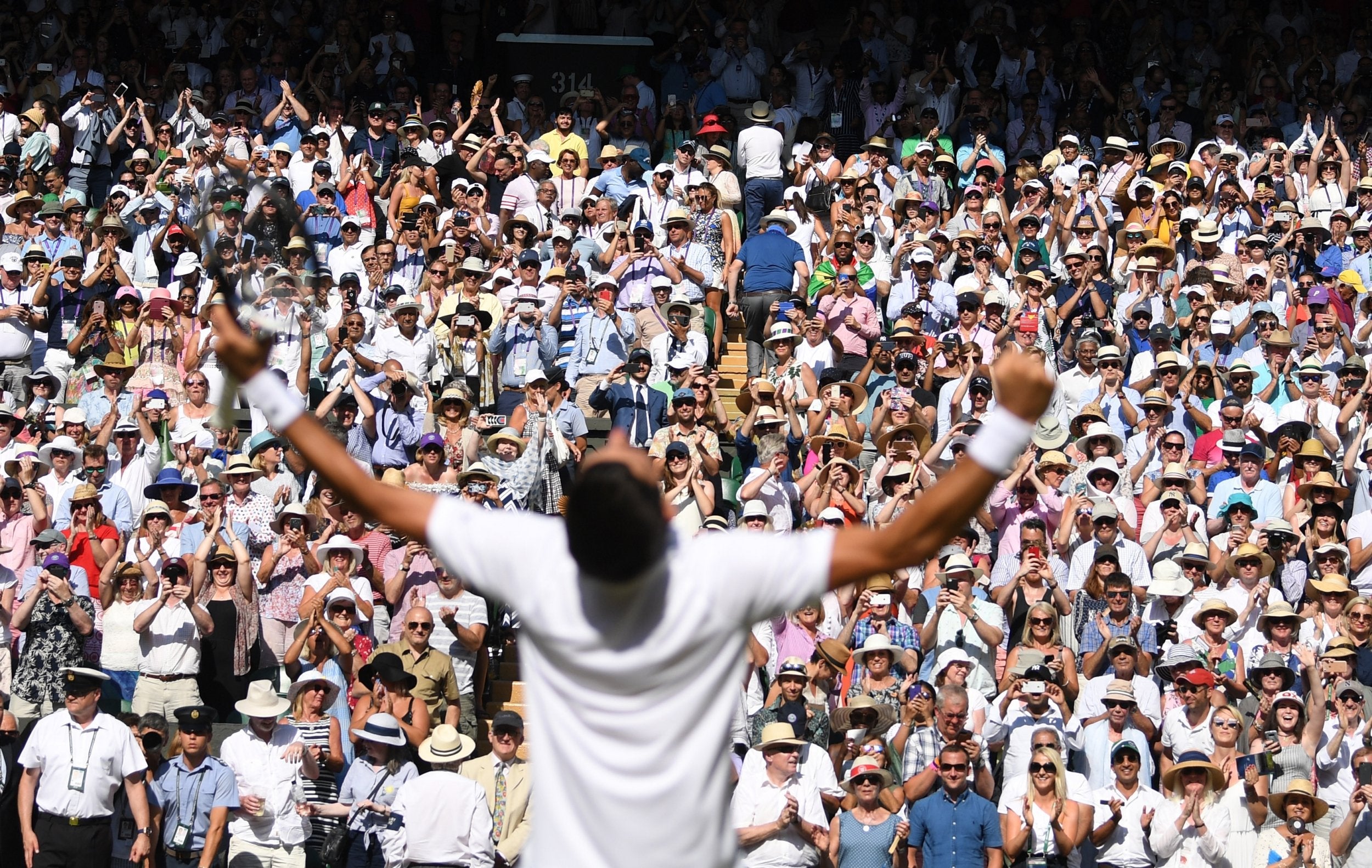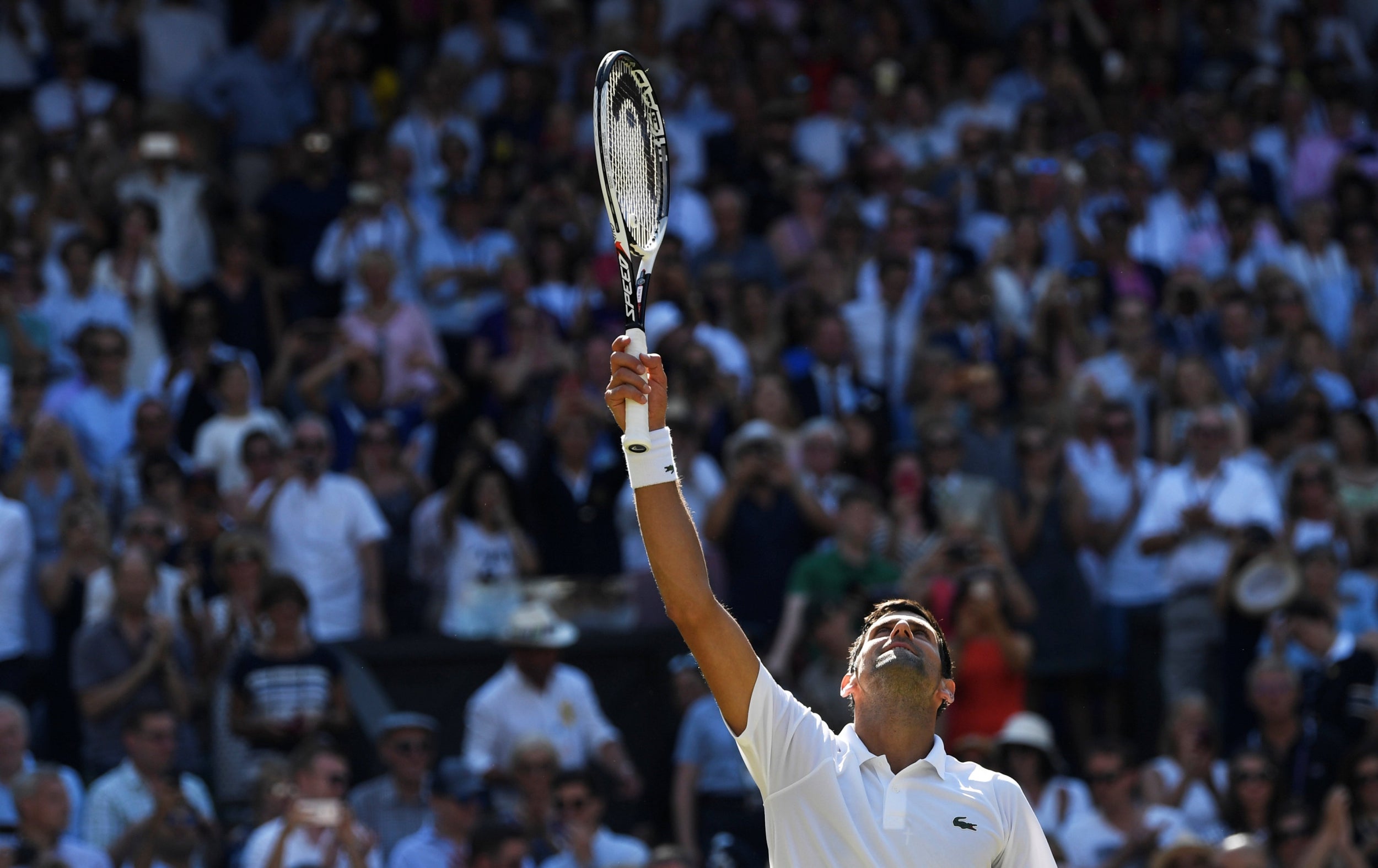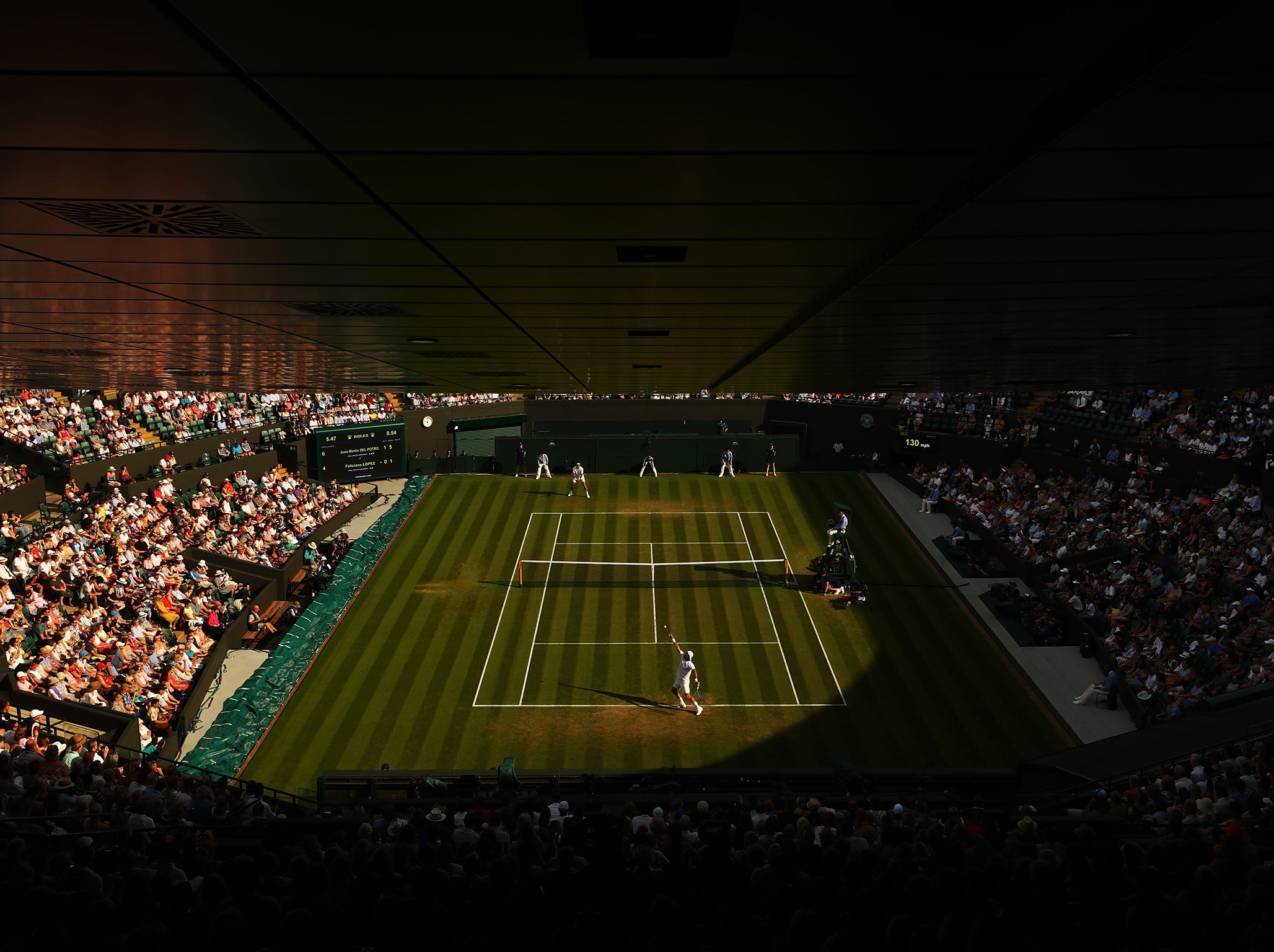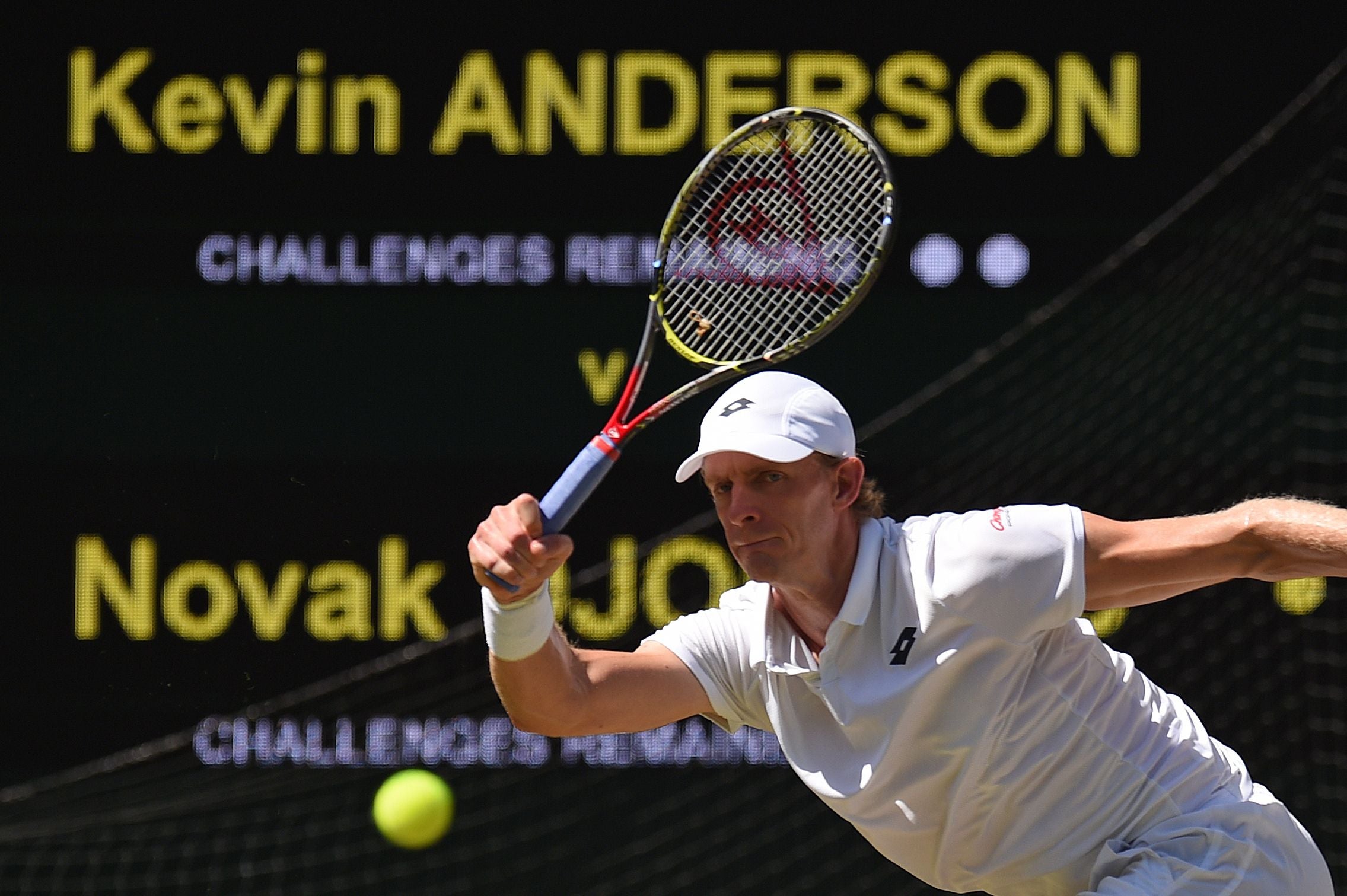Novak Djokovic's return to the top was just one strand of an unpredictable Wimbledon summer
The most modern of players conquered tennis' most traditional tournament again

Your support helps us to tell the story
From reproductive rights to climate change to Big Tech, The Independent is on the ground when the story is developing. Whether it's investigating the financials of Elon Musk's pro-Trump PAC or producing our latest documentary, 'The A Word', which shines a light on the American women fighting for reproductive rights, we know how important it is to parse out the facts from the messaging.
At such a critical moment in US history, we need reporters on the ground. Your donation allows us to keep sending journalists to speak to both sides of the story.
The Independent is trusted by Americans across the entire political spectrum. And unlike many other quality news outlets, we choose not to lock Americans out of our reporting and analysis with paywalls. We believe quality journalism should be available to everyone, paid for by those who can afford it.
Your support makes all the difference.With his gluten-free diet, his use of meditation and his willingness to explore the best that science can offer to aid his fitness and his tennis, Novak Djokovic is the most modern of players. On Sunday night, however, the 31-year-old Serb showed he also has an eye for tradition when he asked Angelique Kerber to dance on stage with him at Wimbledon’s Champions’ Dinner at the Guildhall in the City of London.
Just as he did when he asked Serena Williams to strut her stuff with him at the same event three years ago, Djokovic said he was mindful of the fact that dancing used to be a tradition at Wimbledon’s end-of-tournament celebrations, even if it is 42 years since Bjorn Borg and Chris Evert shared the first dance at the last Champions’ Ball in 1976.
The disco beat to which the Wimbledon 2018 singles champions gyrated for a minute or two, to loud applause and cheers from an appreciative audience, was no doubt very different to the music that played when the champions of the past took to the dance floor, but Djokovic is well aware of his place in history.

In the last 100 years only four other men can match or better his tally of Wimbledon singles titles - Roger Federer (with eight titles) Pete Sampras (seven), Bjorn Borg (five) and Rod Laver (four) – while the champion of 2011, 2014, 2015 and 2018 is also moving up the all-time list of men’s Grand Slam singles champions. The only players ahead of Djokovic are Federer (20 titles), Rafael Nadal (17) and Sampras (14).
Given the fact that he has always been one of the game’s fittest players, there appears to be no reason why he should not add to those tallies, especially given the longevity of so many modern-day players. Djokovic, nevertheless, said he still had to assess whether he could play consistently at the same level he rediscovered at Wimbledon over the last fortnight. “I really can't see the future,” he said.
Bookmakers, nevertheless, have already installed Djokovic as the favourite to win the US Open, which starts in only six weeks’ time, just ahead of Federer and Nadal. With Andy Murray also aiming to make the field at Flushing Meadows – the Scot plans to start his hard-court campaign in Washington in a fortnight’s time – the US Open is set to be the first Grand Slam tournament where all of the “Big Four” have competed since last year’s Wimbledon.
Philip Brook, the chairman of Wimbledon, said at Sunday night’s Champions’ Dinner that Djokovic had become “one of the most formidable competitors this sport has ever known” and told him: “It has been a privilege to witness you back to your best throughout these Championships.”
It was indeed a remarkable comeback given the former world No 1’s troubles over the 22 months that separated his last two appearances in Grand Slam finals. During that time Djokovic went through crises of motivation and confidence, dealt with off-the-court personal issues - which he has never talked about in detail in public - and suffered an elbow injury which ultimately required an operation.
Having struggled through his initial comeback at this year’s Australian Open and then undergone surgery, he won only three matches in his next four tournaments, beginning at Indian Wells in March, and started to look more like his old self only towards the end of the clay-court season

Djokovic, who returned to No 10 in the world rankings in today’s updated list, said he had learned to be patient. “Going back to February, when I had the elbow surgery, I really was impatient,” he said. “I wanted to come back and compete as quickly as possible. I wanted to get out on the court.
“I was still feeling a little bit of discomfort and pain playing Indian Wells and Miami. I just kept going, even though everyone was against me competing at that stage. I took the responsibilities. I could not imagine myself being away from the tour another few months after being away from the tour for six months at the end of last year. I had to learn the lessons in a hard way.”
Asked if there had ever been moments when he wondered whether he might never get back to the summit again, Djokovic said: “Yes, absolutely. There were several moments where I was frustrated and questioning whether I could get back to the desired level or not. But that’s what makes this whole journey even more special for me.”

Marian Vajda, Djokovic’s long-time coach, who reunited with him during the clay-court season, said he had not expected the Serb to win Wimbledon and had even been surprised by his semi-final victory over Nadal. “Rafa was mentally much better and winning Grand Slams but something amazing happened in the fifth set,” Vajda said.
The 53-year-old coach said that winning Wimbledon this year was the biggest surprise in all his time working with Djokovic. “I was thinking it would take a longer time, maybe three, four, five months, that maybe the US Open would be the right time,” he said.
“Novak stopped for six months. If you play the violin and you stop for six months, you cannot play any songs. He didn't play the songs, and you have to practise, practise, practise until you break the racket, strings, everything and the routine comes back, the body remembers.
One consequence of this year’s Championships could be a change in the rules regarding tie-breaks in final sets. The fact that Kevin Anderson, the beaten finalist, was on court for more than six hours in his semi-final against John Isner on Friday certainly appeared to contribute to his below-par performance against Djokovic.
While the All England Club might not want to follow the example of the US Open, where the final sets go to a tie-break at 6-6, there is growing support for a change to final set tie-breaks at 12-12

Wimbledon might also reconsider its policy for seeding players in future. In particular it could use the formula it applies for the men, which gives extra weight to their grass-court performances over the last two years, to the women.
There will also be talks about whether to reduce the number of seeds in the singles competitions from 32 to 16 next year. However, given the number of shock results over what has been a memorable last two weeks, during which time seedings and world rankings have often counted for nothing, some might argue that you could do away with seedings completely.
For those who might have thought that tennis was becoming too predictable, the Championships of 2018 have been a reminder of sport’s glorious unpredictability.
Join our commenting forum
Join thought-provoking conversations, follow other Independent readers and see their replies
Comments